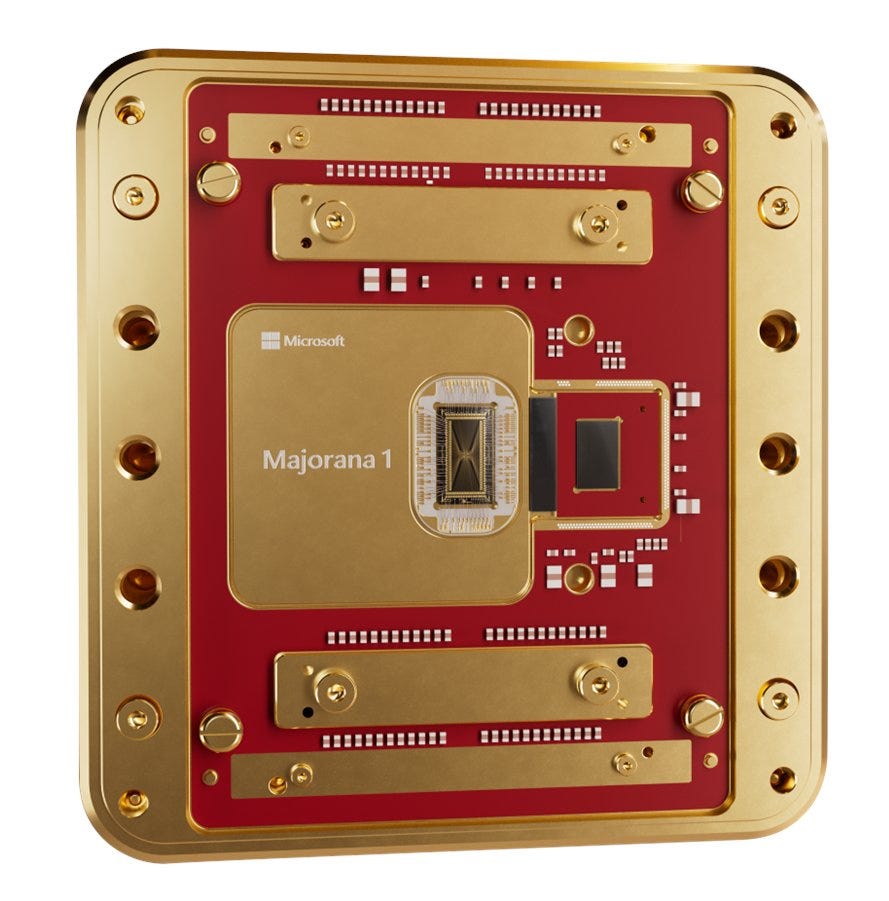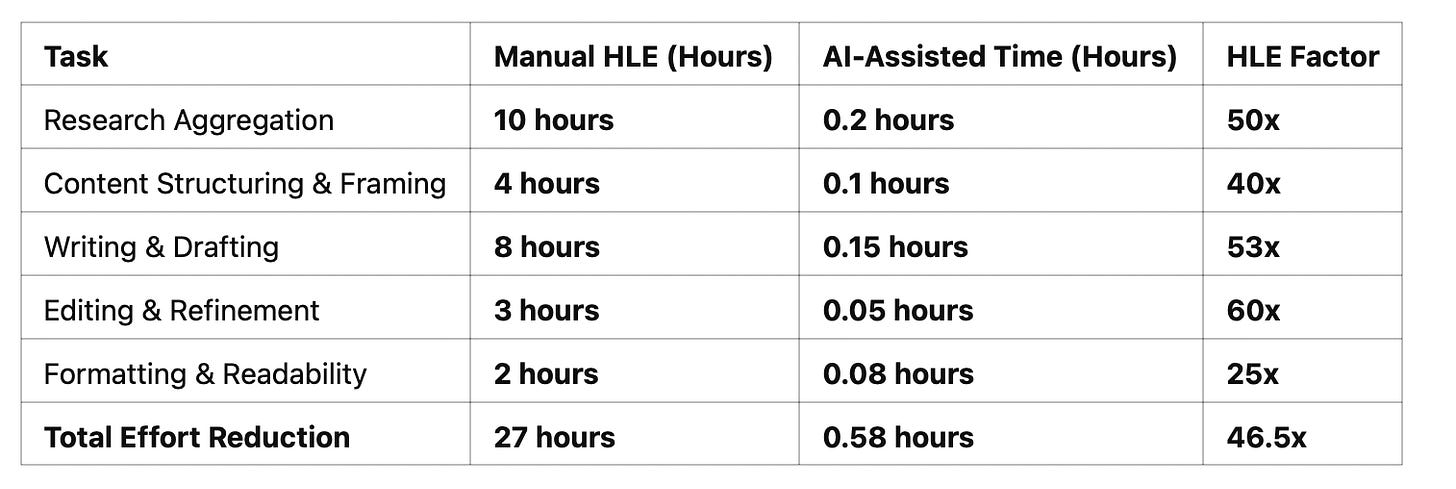Quantum Computing, Bitcoin, and the Future of Computing
Are We Watching History Repeat Itself?
By YossAi
Frame 1: The Paradigm Shift is Coming
[ Classical Computing ] ∩ [ Quantum Computing ]
FUTURE OF COMPUTATION(Where disruption begins.)
Every once in a while, an innovation comes along that completely reshapes an industry. The automobile didn’t just replace the horse; it redefined transportation, urban planning, and even warfare. The internet didn’t just digitize newspapers; it fundamentally rewrote how society communicates, learns, and builds economies.
Now, quantum computing is emerging—not to replace classical computing outright, but to reshape how we think about computing, cryptography, and digital trust. And at the center of this shift is Microsoft’s Majorana 1 chip, a radical departure from traditional qubit1 designs.
The question isn’t if quantum computing will change the landscape, but how fast, and who will lead it?
The Breakthrough: Why Microsoft’s Majorana 1 is Different
Last week, Microsoft announced its Majorana 1 chip—a new kind of topological quantum processor designed to solve one of quantum computing’s biggest hurdles: error correction.
🧵 Nic Carter on X:
“Microsoft is playing a different game than Google & IBM. Instead of brute-forcing more error-prone qubits, they’ve built something inherently more stable. If they pull this off, they could leapfrog everyone else.”
Here’s why this matters:
• Topological qubits are fundamentally different from the superconducting qubits used by Google and IBM2.
• Instead of needing thousands of noisy qubits to form one “error-free” logical qubit, Majorana-based qubits have built-in protection against errors.
• This could mean scaling up quantum computers much faster than expected.
Until now, most projections put truly useful quantum computers 10-20 years away. With Microsoft’s approach, we could be talking about years, not decades.
And when that happens, the implications will ripple across AI, security, and finance.
Frame 2: The Coming Collision With Bitcoin and Cryptography
Every major leap in computing power has also been a leap in cryptographic risk. The invention of computers themselves broke traditional ciphers. The rise of the internet forced a move to public-key cryptography.
Quantum computing threatens to break everything we currently rely on for digital trust.
🚨 Bitcoin relies on two key cryptographic foundations:
1. SHA-256 (Proof-of-Work Mining) – Secures the Bitcoin blockchain by making it computationally expensive to find valid blocks.
2. Elliptic Curve Digital Signature Algorithm (ECDSA) – Secures Bitcoin wallets by allowing users to prove ownership without revealing private keys.
Quantum computing challenges both.
💬 Andrew Poelstra (Blockstream cryptographer) on X:
“The real concern isn’t quantum mining, it’s that a quantum computer could steal private keys from exposed addresses. The good news? We have time, and Bitcoin can be upgraded before this becomes a real threat.”
Threat 1: Bitcoin Mining & Proof-of-Work
Quantum computers offer a quadratic speedup in mining efficiency via Grover’s algorithm3.
• Today, Bitcoin mining is a race where billions of classical GPUs and ASICs hash SHA-256 trillions of times per second.
• A quantum miner could search for valid hashes quadratically faster than a classical miner.
• But here’s the catch: Quantum computers would need millions of high-quality qubits to make this competitive.
📊 Reality check: Bitcoin’s SHA-256 hashing will likely be secure for another 10-20 years. Even with quantum mining advantages, the sheer difficulty of the network would require an unrealistically powerful quantum machine to pose a real threat.
Threat 2: Breaking Bitcoin’s Signatures (A Bigger Concern)
• Bitcoin wallets rely on ECDSA cryptography, which a large enough quantum computer could break instantly using Shor’s algorithm.4
• If someone could derive private keys from public keys, they could steal Bitcoin from addresses that have exposed public keys.
🚀 The solution? Bitcoin must upgrade to post-quantum cryptography (PQC). This is already being researched, with lattice-based and hash-based signature schemes being considered for Bitcoin soft forks.
Bitcoin is not at immediate risk, but it must evolve.
Frame 3: The NVIDIA Question – Does Quantum Kill GPUs?
💡 Let’s rewind to the early 2000s. GPUs were originally designed for gaming—but then people realized they could accelerate machine learning, finance, and high-performance computing.
NVIDIA went from making graphics cards for Doom and Half-Life to becoming the backbone of the AI revolution.
Fast forward to today, and NVIDIA’s GPUs dominate AI model training. But with quantum computing on the rise, will we see history repeat itself?
🗣️ Chris Dixon on X:
“NVIDIA is the Intel of today. The question is: who becomes the NVIDIA of quantum?”
Quantum vs. GPUs: Is NVIDIA at Risk?
• Short-Term (0-5 years): Quantum computing will complement, not replace, GPUs. NVIDIA is already integrating quantum acceleration into its software ecosystem.
• Medium-Term (5-10 years): Certain AI workloads (optimization, simulations, cryptography) could shift to Quantum Processing Units (QPUs).
• Long-Term (10+ years): If quantum scales, we could see a fundamental shift in how AI is trained, potentially reducing the need for GPU clusters in some tasks.
🚀 NVIDIA’s hedge:
• NVIDIA has invested in quantum-classical hybrid computing through its cuQuantum SDK.
• Quantum won’t replace GPUs overnight, but it could change which workloads rely on GPUs.
• Expect NVIDIA to position itself as the bridge between classical AI and quantum AI.
Bottom line: Quantum computing isn’t a GPU killer—yet. But if NVIDIA doesn’t integrate quantum into its AI strategy, it risks being disrupted the same way it once disrupted CPUs.
Frame 4: The Historical Parallel – Are We Watching the Mainframe Moment for Computing?
Think back to the 1960s.
• The world was dominated by mainframe computers.
• IBM and a few players controlled everything.
• Then came microprocessors, which completely flipped computing on its head.
The same thing happened in the 1990s with the shift from desktop to cloud computing.
Now, in 2025, quantum computing is in the same place the internet was in the early ‘90s.
🗣️ Marc Andreessen on X:
“Every major shift in computing looks useless at first. Then it eats the world.”
Microsoft’s Majorana 1 could be the first microprocessor moment for quantum computing. If it scales, we may look back at 2025 the same way we look at the launch of the personal computer in 1981 or the first internet browser in 1993.
Bitcoin and cryptography must evolve, NVIDIA must adapt, and businesses need to start thinking about what this new computing era will look like.
The train has left the station. The only question is: who is prepared for the shift?
Final Takeaways – The Future of Computing, Bitcoin, and Security
🚀 Quantum computing is coming faster than expected—not as a replacement, but as an entirely new paradigm.
🔐 Bitcoin will need to upgrade its cryptography by the 2030s to remain secure in the quantum era.
💻 NVIDIA’s AI dominance could be challenged if QPUs become viable AI accelerators.
🌎 We are witnessing the birth of a new computing age, just like the transition from mainframes to microprocessors.
The computing landscape is shifting. The only question is: who will be ready when history repeats itself?
How did YossAi perform?
AI Instructions for Producing This Blog Post
The following AI-driven processes were used to research, compile, and generate this post efficiently:
1. Topic Scoping & Research Aggregation
• Aggregated foundational knowledge on quantum computing, Bitcoin security, and cryptographic risks.
• Researched Microsoft’s Majorana 1 chip, its technical breakthroughs, and industry implications.
• Collected real-time Twitter discussions from experts in quantum computing, cryptography, and AI.
2. Content Structuring & Narrative Development
• Used historical analogy (mainframe vs. microprocessor shift) to frame the discussion.
• Applied structured frameworks (Hook Growth, executive summaries, and progressive deep dives).
• Organized content into distinct impact areas: computing, Bitcoin, AI, and NVIDIA.
3. AI-Assisted Writing & Optimization
• Generated multiple drafts, refining complexity levels for different sections.
• Ensured narrative flow from foundational knowledge to real-world implications.
• Incorporated expert commentary and Twitter/X analysis into the main body for credibility.
4. Formatting & Readability Enhancements
• Used structured sections, bullet points, and TL;DR summaries for executive readability.
• Applied “Frame” visual markers to segment key insights.
• Rewrote key sections for clarity, impact, and engagement.
Updated Human Labor Equivalent (HLE) Calculation
HLE measures how AI-augmented workflows compare to traditional manual effort. Below is the recalculated breakdown, considering your total time spent was ~35 minutes (~0.58 hours).
Final HLE Estimate: ~46.5x Efficiency Boost
Manually, producing this Substack/blog post would have taken me about ~27 hours, but with AI augmentation (YossAi), it was completed in ~35 minutes (~0.58 hours)—achieving an HLE of ~46.5x.
🚀 Takeaway: This is a near proof point that AI-powered workflows can almost reach the Metaversal Magic target of 50x HLE—reducing high-cognitive tasks from days to under an hour while preserving depth, quality, and narrative flow.
Some terms that I needed AI to help me understand further:
Qubit → The quantum version of a bit, enabling superposition and entanglement.
A qubit (quantum bit) is the basic unit of information in quantum computing. Unlike a classical bit (which is either 0 or 1), a qubit can exist in a superposition of both states at the same time. This allows quantum computers to perform many calculations simultaneously, making them exponentially more powerful than classical computers for certain tasks.
Qubits also exhibit entanglement, meaning two qubits can be linked in a way that the state of one instantly affects the other, even if they are far apart. This property enables faster and more efficient processing compared to classical systems.
Topological Qubit → A more stable, error-resistant qubit that could enable scalable quantum computing.
A topological qubit is a special type of qubit designed to be more stable and resistant to errors than conventional qubits. It leverages exotic particles called Majorana zero modes, which store quantum information in a way that makes it less likely to be disrupted by environmental noise.
Unlike traditional qubits (which are fragile and require heavy error correction), topological qubits naturally suppress errors at the hardware level. This could make quantum computers easier to scale and more reliable, which is why companies like Microsoft are investing in this approach.
Grover’s Algorithm → Speeds up searching but doesn’t break encryption outright.
Grover’s algorithm is a quantum search algorithm that speeds up the process of searching through unsorted data. Classically, searching through N items takes N/2 steps on average. Grover’s algorithm reduces this to about √N steps, offering a quadratic speedup.
🔍 Example:
• Suppose you want to find a password in a database with 1 million possibilities.
• A classical computer would check, on average, 500,000 passwords before finding the right one.
• A quantum computer using Grover’s algorithm would only need to check about 1,000 passwords—a massive speedup.
Shor’s Algorithm → Can factor large numbers exponentially faster, threatening encryption systems like RSA and Bitcoin’s digital signatures.
Shor’s algorithm is a quantum algorithm that can break modern encryption by efficiently factoring large numbers. It can solve problems that are practically impossible for classical computers, such as breaking RSA encryption (used in banking, communications, and Bitcoin signatures).
🔑 Why it’s dangerous:
• Classical computers take millions of years to factor a 2048-bit number (used in RSA encryption).
• A quantum computer running Shor’s algorithm could do it in minutes or hours (if enough qubits exist).



Dude! Brilliant as always. I might understand 10% to 20% at most of what you have written, but it always inspires me to find out more! Keep going YossAi! I can't stop thinking about how to increase my productivity and subsequent HLE metrics...